About a month ago, I discovered the Sichuan cookbook Land of Plenty by Fuchsia Dunlop online and became immediately intrigued. The collection of recipes has received rave reviews from critics, bloggers, and buyers on sites like Amazon, and after having perused various images of dishes people had whipped up from the book, I felt an overwhelming desire to try one out myself. The only problem: I didn’t have Land of Plenty. You see, I haven’t found it in any bookstores as of yet, and while I could purchase it off Amazon (for cheaper), I’d personally like to at least leaf through it once before ordering to see if it’s even a cookbook I’d use frequently enough. Nothing worse than a novelty cookbook taking up space on the shelf.
Well, in lieu of being able to thumb my way through Land of Plenty, I resorted to Googling people’s experiences with the book, and that ultimately took me to a site called Eat It, Atlanta, which features a “Land of Plenty series” in which a writer attempts to cook perhaps all of Dunlop’s recipes. He eventually stops after about eight or ten posts, which is unfortunate, but at least there’s enough content there to give me a small idea of what’s in the cookbook. One of the more intriguing recipes is for something called Red Cooked Pork — fascinating to me for both the name, the appearance, and its lack of exotic ingredients (ie. Sichuan peppercorns). With my appetite and curiosity piqued, I followed a link from Eat It, Atlanta to a site called Appetite for China where I found Fuchsia Dunlop’s recipe for the dish. Upon seeing the photos on that website, I knew it was AWN. Granted, it didn’t look like the healthiest of recipes, but I figured this (coupled with my next planned Adventure in Domesticity) would be my triumphant final fatty huzzah to 2009 (with healthier forays to come in the New Year, as is often the lofty goal).
But would I be able to successfully pull off this dish, which was apparently the favorite of Chairman Mao? Results after the jump…
First, I must warn that the recipe I used was adapted from Fuchsia Dunlop’s version; so I can only hope that it didn’t veer too far from the original printed item. That being said, here are the pics:
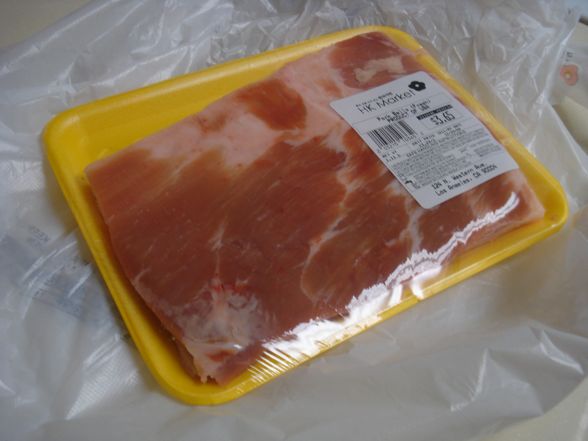
The dish calls for a pound of pork belly, which at $3.65 is remarkably cheap. Unfortunately, I had to shlep to Koreatown to get it, but apparently all the reviews and commenters online insist that there is no substitute cut for this dish.
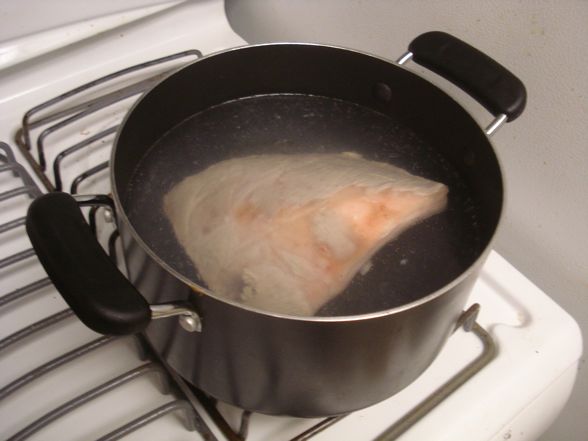
First I must blanch the meat in boiling water for about three or four minutes. Charming.
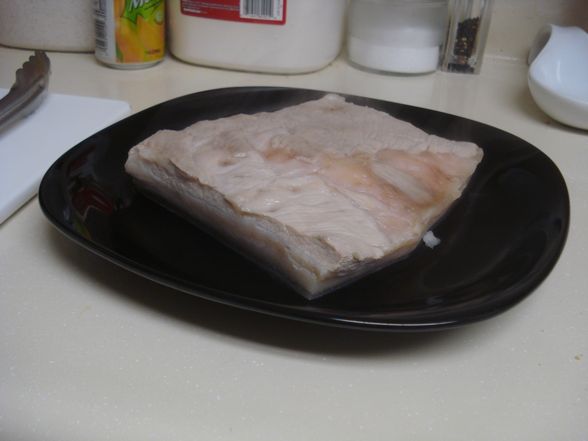
PBPB (pork belly post-blanch)
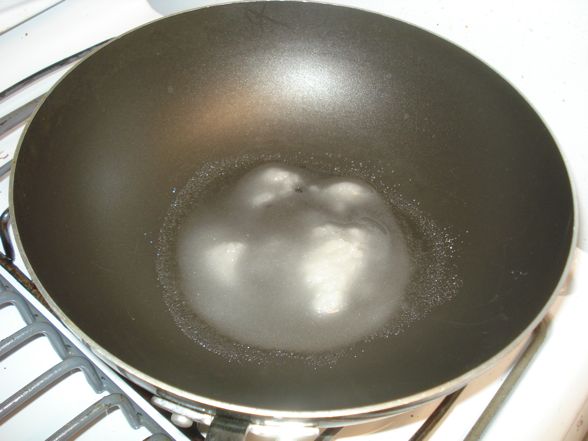
Next I must caramelize two tablespoons of sugar in two tablespoons of peanut oil. The recipe calls for a low-flame. Hopefully this shouldn’t take too long…
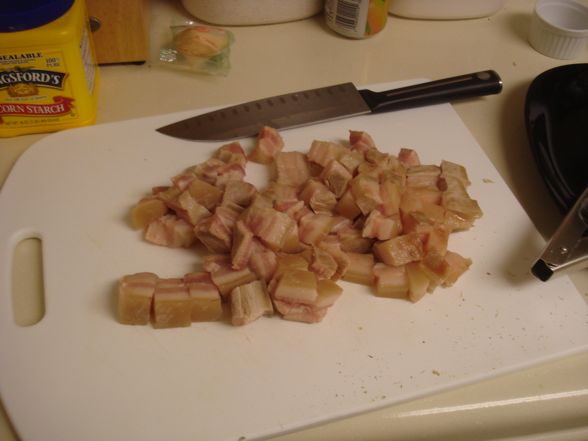
In the meantime, I dice up the pork. I’m ready to go.
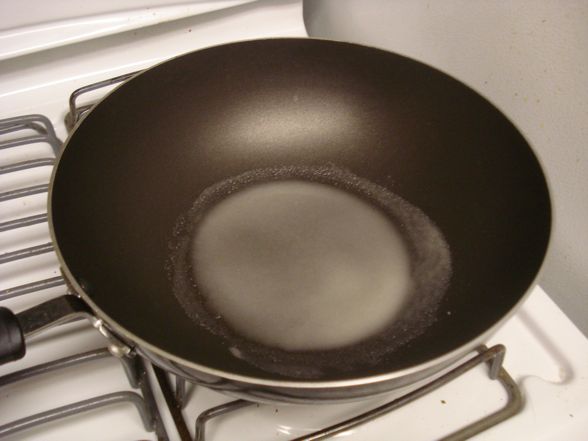
Still nothing.
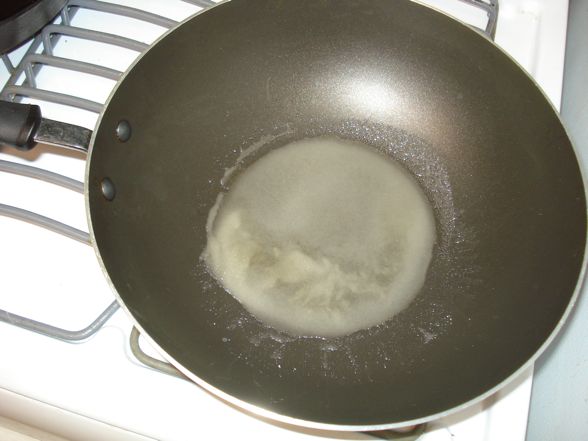
Twenty five minutes later, I begin having concerns about this process.
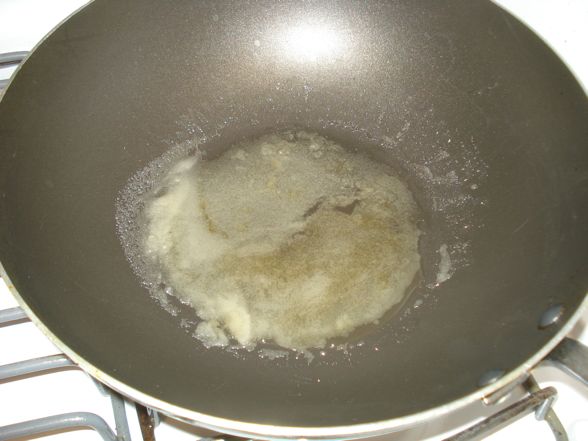
I turn the heat up a little, and finally I get some color. Only took HALF AND HOUR. The sugar, however, starts to do strange things. Instead of melting, as was promised, it sort of looks like it’s solidifying into some sort of candy-esque thing. I fear this is not good but continue on.
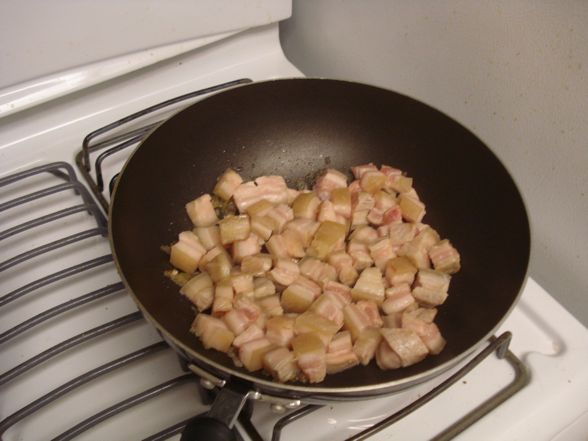
Impatiently, I throw the pork into the sugar-oil mixture. I know I could probably let the sugar brown a bit longer, but it was already taking so long, and quite frankly, I had a decent brown color going on. Not the deepest of ambers, but whatever. I was hungry.
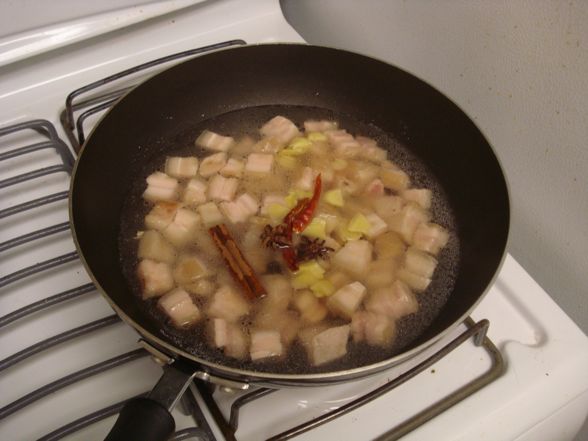
As per the instructions, I then cover the meat with water and add a cinnamon stick, some dried red chiles, some star anise, and some sliced ginger.
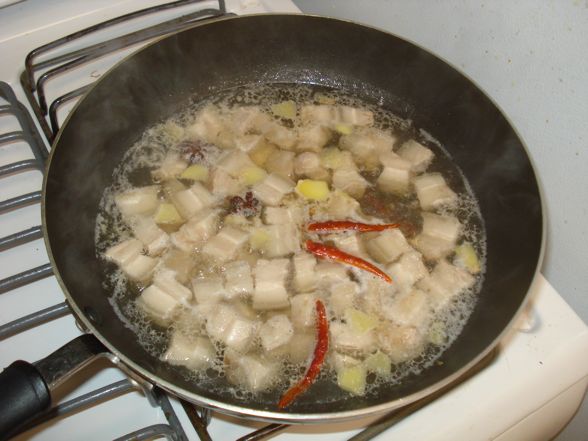
I then bring the whole thing to a boil before reducing it to a simmer for the next forty-five minutes or so.
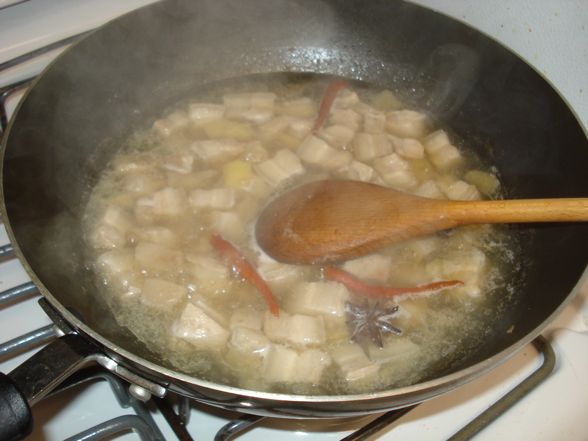
Periodic stirring.
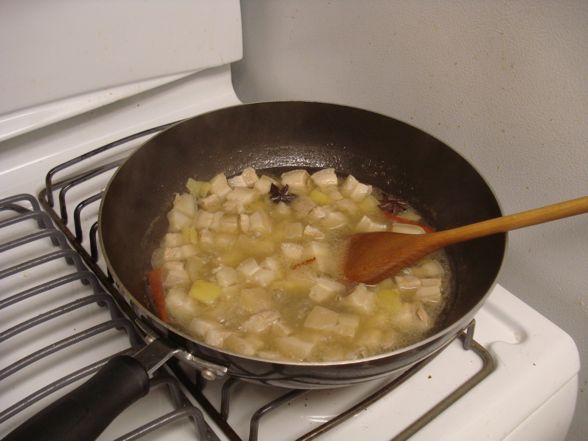
About thirty-five minutes later, this is what the wok is looking like. I should note that my apartment smelled fantastic.
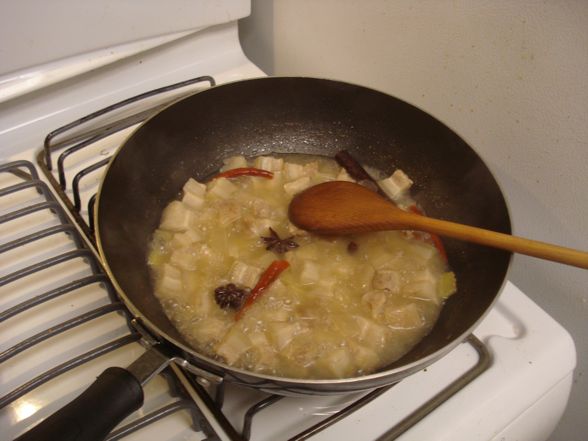
In the final stretch, I’m instructed to raise the heat and evaporate off the liquid, reducing it down to a glaze. Let the excitement begin!

Eight minutes later, I reach glazey goodness. The pork, however, is a far cry visually from what’s posted on the Appetite for China site. That’s probably due to the fact that I was impatient with the caramelization. My bad.

Some soy sauce then enters the equation.
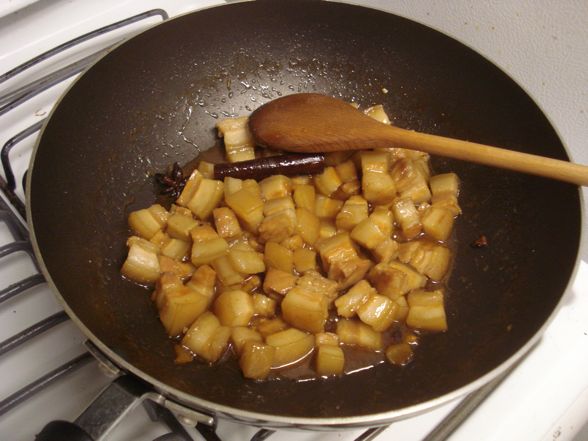
Further stirring and reduction yields what finally appears to be a legit Chinese dish.
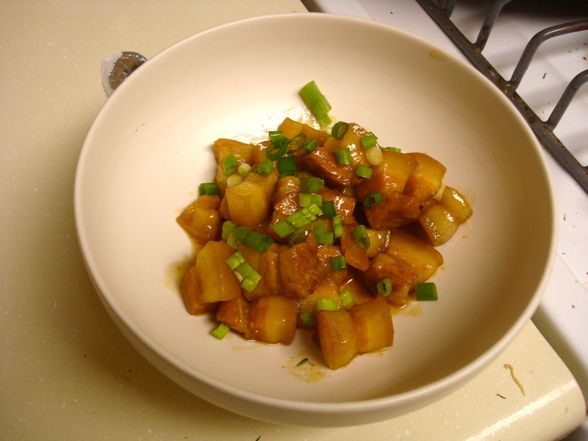
Success!
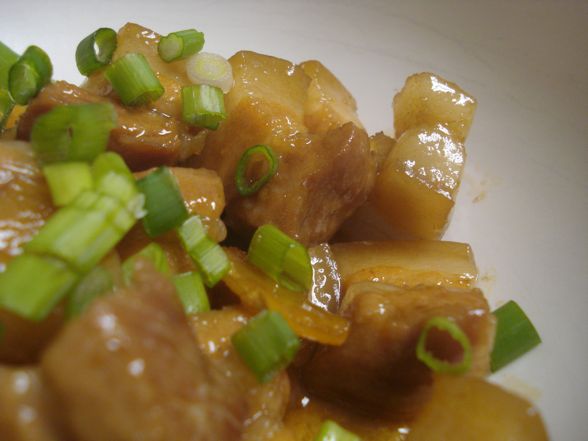
And, of course, the obligatory macro shot.
The verdict? Pretty damn good! I’ve never really had pork belly in this manner, and while I was a bit turned off by the fat content (trust me — this is not going to be a regular dish), I have to admit that those ribbons of fat produced a wonderfully soft texture that contrasted quite well with the meat itself. The whole thing was sweet and rich and tasty with just the right amount of spice — all of which I enjoyed immensely. If I were to make this again, I’d have more patience with the caramelization process (although, I would heat the sugar at a higher heat) and really try to get a beautifully dark color on the meat. Surely this would lend itself to even more flavor. Definitely a successful foray into Chinese food. Perhaps further adventures shall ensue…
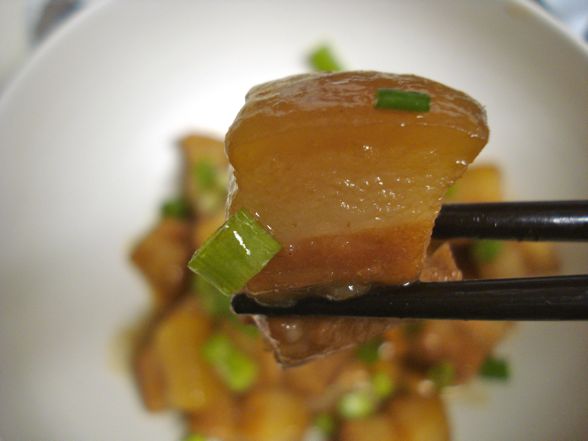
Pork belly is where bacon comes from and that brings up the fact anything tastes great with bacon!
http://www.jdfoods.net/products/baconsalt.php
I didn’t see where you added the wine for Sweet Saki.
Hi Ben. Glad to see you used my adaptation of the red cooked pork recipe.
Sorry that it took half an hour to brown the sugar! Almost all my recipes are tested on cast iron woks or stainless steel pans, which tend to heat up faster than non-stick pans. With a wok, the sugar can melt, brown, and burn in a matter of minutes, so it’s a good idea to set it on a low flame. If you’re using non-stick cookware, you have more leeway and can use a medium or even medium-high flame.
Hope that helps!
Are you part Asian? I’m just saying!
Thanks for checking out my site! You are correct that i didn’t cook the whole book, but I did post at least 10 of my attempts, and i had a few more as well.
I recommend people buy this cookbook, it taught me quite a bit about Chinese flavors/techniques/preparations/methodology and has really opened up my cooking repertoire.
It also forced me to hit up some of the Korean and Chinese grocery stores in Atlanta, which were very unfamiliar (and sometimes intimidating) to me, but these stores usually offer the greatest selection of Asian goods at very reasonable prices.